Orange Birch Bolete / Summer / Autumn / Edible
The Orange Birch Bolete is a tasty Bolete with a bright cap and dirty looking stipe, this like many other edible boletes are very tasty.
Scientific Name
Leccinium Versipellis
Common names
Orange birch bolete, dark-stalked bolete
Family
Leccinium
Habitat
Common in temperate areas of Europe, Asia and the Americas’ grows as the name suggests under silver birch trees. They prefer acidic soil, woodland edges and heathland
Description
A tasty Bolete with a bright cap and dirty looking stipe, this like many other edible boletes are very tasty and nearly match the Cep/Porcini in flavour, thier bright orange cap can make them both easy to spot in early autumn but harder towards the end as it hides it neatly in the leaf litter.
Identifying Features:
Cap:
Starting ovate and becoming convex. Colour is orange to buff. The cap slightly overhangs the pores.
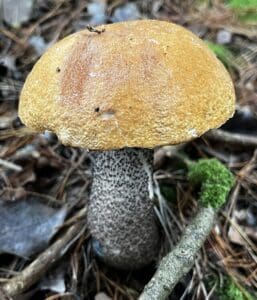
Stem:
White to cream with brown and black scales all over the stem giving it a dirty looks. The stem can often be longer than the cap is wide.
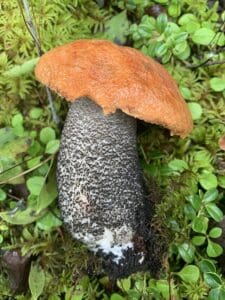
Pores:
Pores on the underside of the cap are light yellow going browner with age.
Smell:
Deep mushroom scent
Spores:
Brown
Uses
In food
Can be used in a vast number of recipes, however, one of our favourites is simply fried quickly and stirred through white rice to give bright flecks of purple.
It has a excellent flavour that is nearly as good as the Porcini/Cep so works well as a flavour enhancer in any dish. however these must be cooked for 15 to 20 minutes as they are poisonous when raw.
This is a very large mushroom, and caps mature at between 8 and 20cm diameter so you will not need a huge amount. Can be used to make up the number of Ceps in a recipe or as a replacement.
Known hazards
Must be cooked as poisonous when raw, needs 10- 20 mins of cooking to make it safe.
Potential lookalikes
Potentially The Orange Oak Bolete as it can grow with Birch but the two are edible if well cooked. however the cap overhanging the spores is a feature that only the Orange Birch Bolete has so is a good identifier.
Maybe other boletes such as the Penny bun but this lacks the black scales on the stem



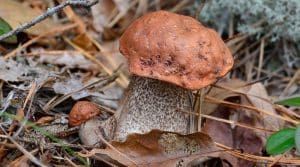
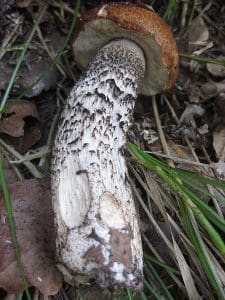
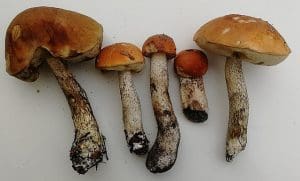




Leave a Reply
You must be logged in to post a comment.